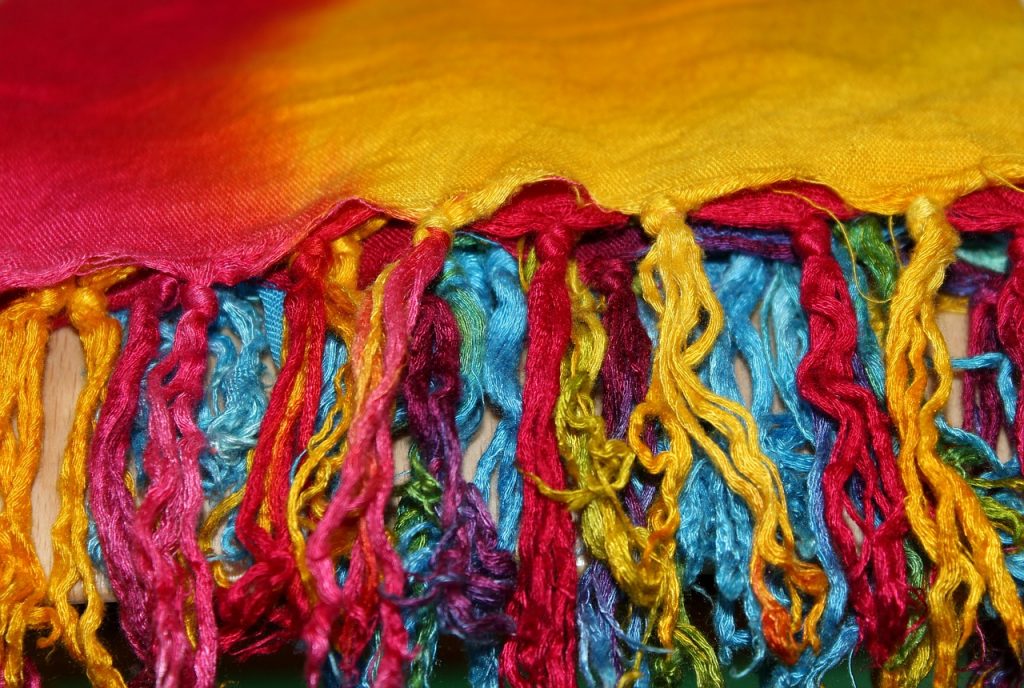While known for its striking beauty, Kashmir’s popularity has many other dimensions that make the valley a genuinely fascinating place. One of them, as you might have guessed by now, is the Kashmiri pashmina shawls. Woven with high-quality wool and featuring an intricate embroidery that signifies the artisan’s finesse, pashmina shawls aren’t just an excellent choice to keep yourself warm during the winter but an amazing aesthetic sight. That’s not it, though. There exist many reasons that make Kashmiri pashmina shawls famous. Let’s look at seven of them.
What is Special about Pashmina Shawl | 7 Reasons Handmade Pashmina Shawls are Famous
1. Original Pashmina is Handmade
The demand for Pashmina shawls in the 21st century could have encouraged traditional artisans to switch to using machines to stitch the shawls. However, they haven’t. Original pashmina is still wholly handmade. Artisans collect the shredded fiber and sort them, based on the color and texture. Furthermore, they spin, weave, and dye with their hands. Consequently, it can take several hours to days to weave an authentic and excellent quality pashmina shawl.
No wonder, pashmina shawls are premium-priced and revered across the globe! They truly reflect the hard work, time, and dedication of the artisans.
2. Superior Wool Quality
Now, what is pashmina, though? Is it the shawl’s design? No. Pashmina refers to a high-quality variant of spun cashmere wool, which the Changthangi goats naturally grow over their underbelly, around the neck, behind ears, and various other small parts of the body, as a natural defense mechanism to protect themselves from the harsh winters that blossom across the Ladakh region. Cashmere is collected across areas where goats rub their bodies. Furthermore, some amount of cashmere is collected by gently and ethically combing the bodies of the goats.
The wool lumps are stored and cleaned in small packets, which are sent to Kashmir, wherein the processing takes place. The lumps of raw cashmere are spun and hand-woven into yarn to produce shawls, scarves, etc. It is worth noting that pashmina shawls go through the hands of many experienced artisans before it hits the market.
3. Lightweight, Yet Optimal Warmth
A woolen shawl seems heavy, right? Not really. A pashmina is way lighter than you may expect. That’s because the yarn of cashmere is around 12 to 16 microns in diameter, and an entire shawl weighs about 300-400 grams. So, you don’t have to put in an effort to carry a Pashmina shawl wrapped around you or in your suitcase. And that makes it a popular winter wrap, especially among women, who may prefer it over heavy jackets, or coats.
Now, you may doubt how warm a lightweight shawl can be? And that’s quite obvious of you to think so. But remember, the wool collected and extracted is a high-quality one that the goats grow to protect themselves from the extreme cold. The shawl is a natural insulator. As it is breathable, you will never feel excessively warm or sweaty after wrapping the shawl for a long time around your body. You may also use it during spring and autumn as well.
4. Pashmina Shawls are Part of Heritage
There are a couple of stories about the beginning of the pashmina shawl industry. Some consider pashmina shawls to be part of an almost 600-year-old heritage. According to this belief, isn’t the 15th century the then ruler of Kashmir, Zayn-ul-Abidin, started the wool industry in the region, and that’s how pashmina was introduced.
However, according to another belief, pashmina shawl-making was popularized by Mir Sayyid Ali Hamadani, who brought 700 artisans from Persia. Perhaps, no matter the belief, pashmina shawls are part of an old heritage that contributes to their demand, not only in India but across the globe as well.
5. Elegant, Yet Durable
As mentioned earlier, pashmina shawls feature an intricately woven design that adds to their elegance and aesthetics. But these shawls aren’t just a graceful sight, they prove durable if taken care of properly. Nevertheless, shawls must be washed as per the standard instructions of the artisan or the seller through whom you buy them.
6. Elegant Design Patterns
Now, embroidery isn’t the only thing you may see on a pashmina shawl. Artisans can pattern, ombre dye, print, or weave it in Kani style. So, you will always have a wide variety to choose from when it comes to these shawls.
7. Stylish and Graceful
It is cool to wear a pashmina shawl. It looks graceful, not only on a traditional saree or a salwar kameez. You may complement your western attire with a stylish Pashmina shawl, or even a scarf, for that matter!
Kashmiri pashmina shawls, scarves, etc., are a source of livelihood for the artisans that make it. Hence, as tourists visiting Kashmir, we must support artisans by purchasing pashmina as and how feasible it is. And that applies to several other local handicrafts and products that people across the valley create for a living. It will help us, as a nation, keep our heritage alive, and the people that survive on it sustain.



